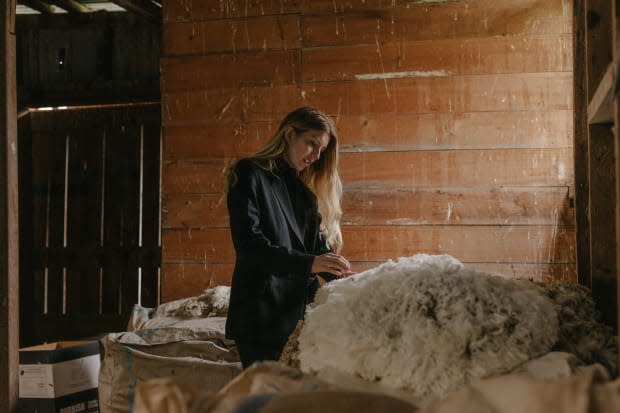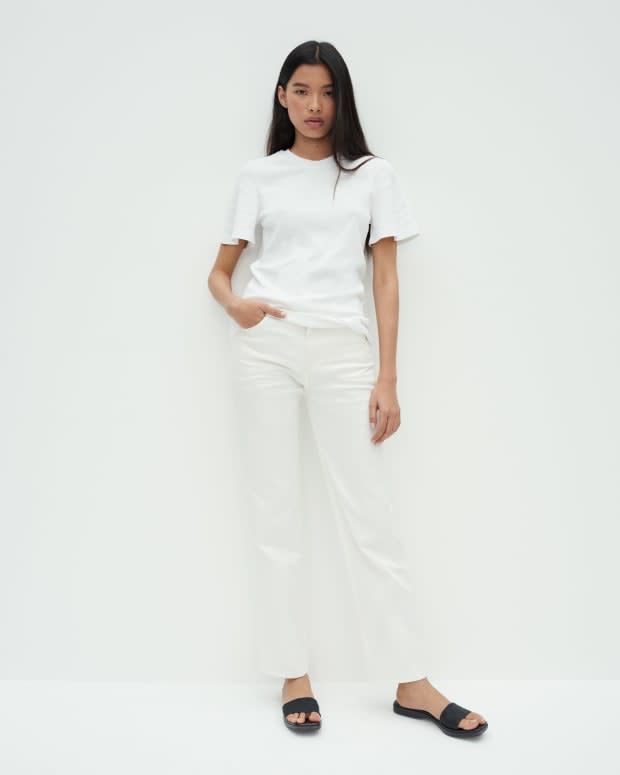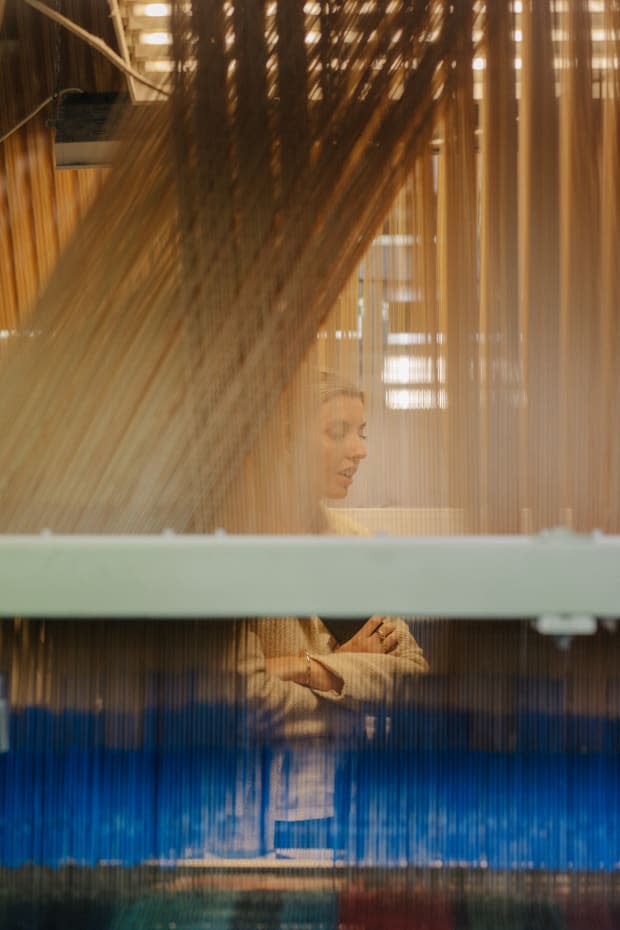The Complexities of Pricing Responsibly Made Clothing
Increase product costs so you can pay workers more, or keep products cheap so that "sustainable" clothes will be more accessible? The designer behind Maggie Marilyn wrestles with it all.

Designer Maggie Hewitt didn't exactly set out to make expensive clothes. When the New Zealand native graduated from fashion school and started her label Maggie Marilyn, she was focused on creating in such a way that every person or animal or plant involved in the making of her line was treated gently.
She also set out to make beautiful clothes from high-quality materials. The result is that she was swooped up by Net-a-Porter as her first-ever stockist, got shortlisted for the LVMH Prize just months later and was sold in almost every major luxury retailer by the time her brand was a year old.
Although the buzz was exciting, the wholesale infrastructure meant a bigger and bigger markup was being added to Maggie Marilyn pieces before they were sold to customers. Eventually, Hewitt began to question the system.
"At some point, I realized we were selling an $800 dress. I couldn't even afford that!" she says when we meet up in New York. "We're really talking about 1% of the population who can buy that."
And though sustainability and ethics are often used as a (sometimes fair) justification for a higher price point, Hewitt wasn't comfortable with just how high her prices were getting — at least not when she considered how many people, like her, couldn't afford them.
Related Articles
Could Visiting a Landfill Transform Fashion Students Into More Sustainable Designers?
Most Fashion Brands Don't Know Enough About Their Carbon Footprints to Actually Shrink Them
Is Your Greta Thunberg T-Shirt Contributing to Climate Change?
Those concerns were a big part of what spurred Hewitt to launch Somewhere, a new line of seasonless basics released on Friday. While colorful mainline Maggie Marilyn pieces cost between $150 and $2,195, Somewhere's neutral pieces start at $45 for a tank top and top out at $420 for a blazer. Hewitt asserts that the same rigorous ethics go into the supply chains behind both lines and that she's keeping prices for Somewhere low by selling direct-to-consumer rather than via wholesale channels.

Pieces from the Somewhere collection. Photo: Thomas Kelly Slack/Courtesy of Somewhere
View the 3 images of this gallery on the original article
She recognizes that these price points mean Somewhere still isn't cheap. But Hewitt's trying to walk the line between charging enough for clothes that she can do things ethically (after all, if being kind to the planet was the cheapest option, everyone would be doing it) and making things accessible enough that responsibly-made fashion isn't reserved for luxury customers.
"We're charging enough that we can actually pay everyone in the supply chain a fair living wage — not a minimum wage, but a living wage — that they can use to better their own life," she says. "And it's enough that there's margin left over to continually innovate within our supply chain to lessen our impact."
For Hewitt, the ability to help her supply chain improve its environmental footprint over time is a non-negotiable. Sure, she could source her raw materials more cheaply further away from her home in New Zealand, but then how could she drive up to the farm and have a conversation about the exciting new research on the climate benefits of regenerative farming that she hopes the landowner will eventually adopt? And how would she find out that her wool partner plays opera music to her sheep because she "loves them like her own children"?
If she charged too much less, it's not likely she could afford to monitor the carbon impacts of her pieces and pay an expert to help her conduct life cycle analyses as a small brand — but these are all priorities to her, too.
She's also chosen to leave enough margin in the pricing of Somewhere to support the development of a circular design process. Starting in 2021, Somewhere will initiate a take-back program founded on the Ellen MacArthur Foundation's principles that will allow the team to recycle old garments into new ones at the end of their lives. Each piece has been developed with that ultimate recyclability in mind.

While some are likely to see Somewhere as still "too expensive," others might retort that if it can be that "cheap," main line Maggie Marilyn pieces should be cheaper, too. Hewitt feels this tension, and tries to underscore that the things that make main line Maggie Marilyn pieces cost what they do are partly the ethics, partly the wholesale model and partly the use of complicated constructions and luxury fabrics that may cost $70 a meter.
And though she's willing to stand by the choices she's made, Hewitt thinks it's right for customers to question and push back against luxury pricing.
"One thing that frustrates me in the luxury part of the industry is that I think they get away with a lot. Like they're just adding bigger margins to their product," she says. "Comparing a $1,000 T-shirt to a $100 T-shirt? Someone's just adding margin onto it; they're not made that differently."
Will cutting out middle men result in enough of a cost drop that Hewitt will be able to find as welcoming a consumer for Somewhere as she has for Maggie Marilyn? Only time will tell. But for now, she's happy to explore new ways to engage with the system that, despite its embrace of her, can leave her yearning for change.
"I always started my brand to hopefully make a positive impact in the industry," she says. "There are systemic flaws to be overcome."
